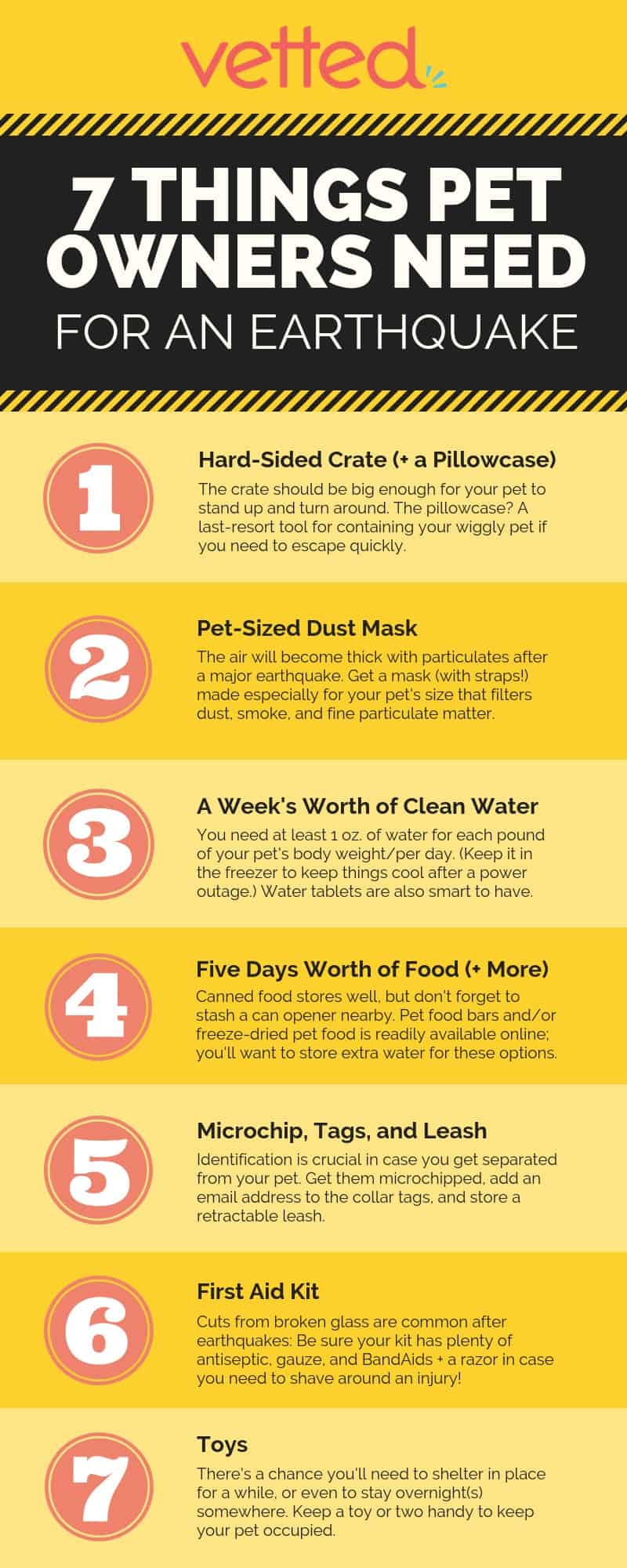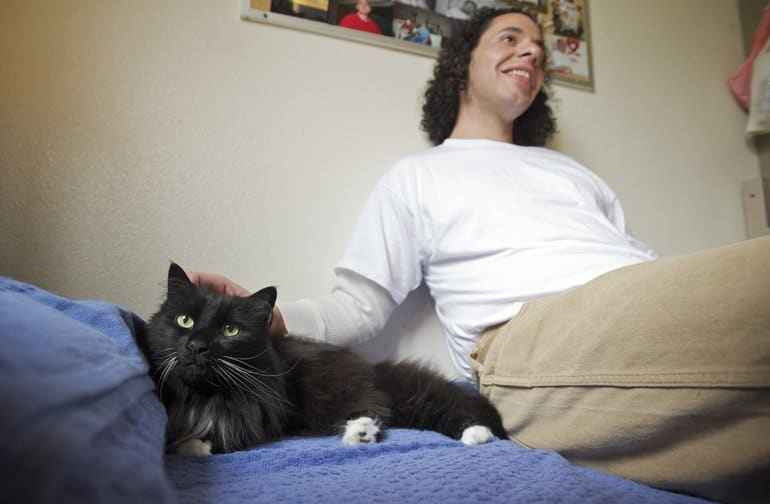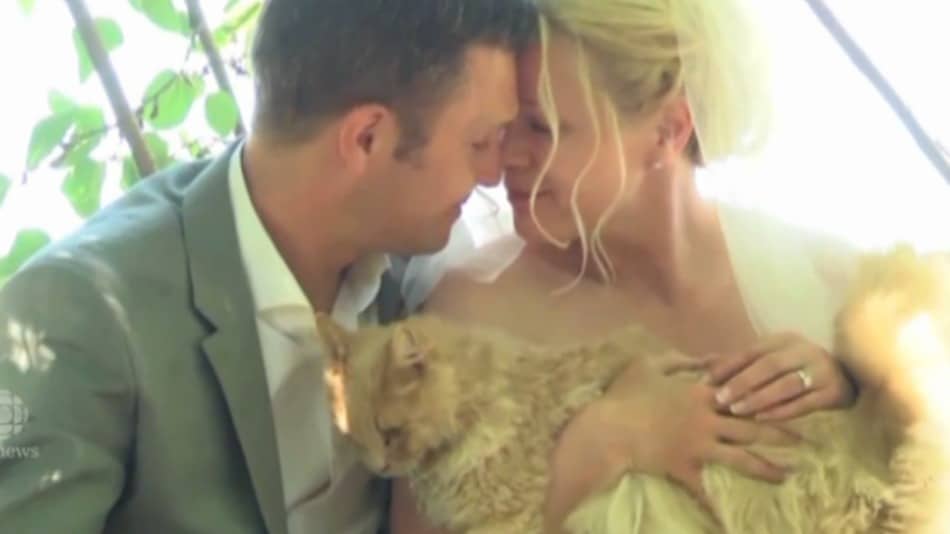Do you live in an earthquake zone? Would you be prepared if an earthquake struck today? Unlike hurricanes, tornadoes, and other natural disasters, earthquakes strike without any warning. The best thing you can do to protect yourself – and your pets – is be prepared at all times.

No one knows exactly when “The Big One” will strike but, if you live in an earthquake-prone part of the world for any extended period of time, it’s not a matter of if, but when, you’re going to experience an earth-shaking event. As a pet owner, it’s your job to learn what to do now so there’s no question when your adrenaline is pumping.
Below are 7 important things all pet owners living in earthquake zones need to keep on hand to best protect their pets in the event of an earthquake, courtesy of VettedPetcare.
When a natural disaster strikes, pets are often extremely scared and nervous, and tend to bolt or accidentally hurt themselves on things like broken glass. The vets at Vetted hope that these tips help pet parents take care of their best friends during these stressful, unexpected times.

Yes, they do make dust masks for pets! Find them here.
Three Things to Do to Protect Your Pet in an Earthquake:
More information about protecting your pets during an earthquake can be found at VettedPetcare.com.
1. Drop, Cover and Hold
In airplane safety videos they tell you to put the mask on yourself before you attempt to help anyone else with theirs. The same is true during an earthquake. The second you feel shaking, drop as low as possible, find a sheltered place like a door frame or underneath a table, and hold on. Unless your pet is literally within reach AND complacent, do not scramble around to grab them before getting to safety.
2. Wait Out the Shaking
If your pet is with you in your safe spot and calm, wait until the shaking stops. If your pet is with you and tries to get away, let them go. A frightened pet may scratch or even bite if restrained; do not risk your own safety to hold your pet in place. If your pet escapes/you let her go off on her own, she’ll attempt to find a safe spot immediately. If your pet was already in a carrier, leave her there! It’s one of the safest places she can be during a quake.
3. Protect Yourself (and Your Pet)
During the earthquake, do your best to cover your head and neck to protect them from falling debris. If you have a small pet, you might want to curl up around her in the fetal position (if she doesn’t become agitated!) to protect her, too. As soon as the shaking stops your pet is likely to want to escape your grasp; try to hold onto her long enough to get her on a leash or into a carrier so she won’t step on broken glass. If your pet ran to another part of the house during the quake, check to make sure she’s safe and if she doesn’t want to come out yet, don’t force her.
Remember that aftershocks are common after a significant earthquake. In the hours and days that follow, keep your pet and her leash close and leave her collar and tags on at all times.
Vetted Petcare is the leading, on demand in-home veterinarian care for pets in the United States. With Vetted, pet parents can avoid the dreaded trip to the vet, and instead have a high-quality, caring vet treat their furry family member in their home whenever is most convenient for them.




